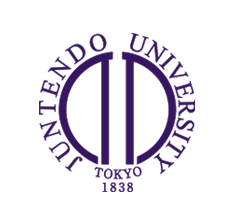Scientists have genetically engineered a new type of cell that could be a potential game changer in cancer therapeutics.
Tokyo, JAPAN – A multinational team of researchers has genetically engineered T-lymphocytes to produce dual receptor rejuvenated T-cells, which exhibit antitumor properties with persistent, unlimited availability in vivo. These cells, adapted from the chimeric antigen receptor T-cells, which are used to treat certain cancers, could potentially be developed into an “off-the-shelf” anti-cancer therapy.
Anti-cancer immune therapy has progressed by leaps and bounds in recent years. Some of the more promising therapeutic agents currently in use are chimeric antigen receptor (CAR) T-cells, which are white blood cells (the primary cellular defense system of our bodies) that have been genetically modified to produce receptors on their surface. These receptors allow the CAR T-cells to recognize and attach to a specific protein, or antigen, on tumor cells. While this immunotherapy has proven to be quite successful against certain cancers, it does have its drawbacks, mainly T-cell exhaustion, antigen escape, and a cumbersome treatment procedure that takes more time than some terminally-ill patients can afford.

An international team of researchers decided to address these issues with CAR T-cell therapy. Instead of using regular cytotoxic T lymphocytes (CTLs) to produce CAR T-cells, they used rejuvenated T-cells, or rejTs, which are cytotoxic T-cells that have been rejuvenated using induced pluripotent stem cell (iPSC) technology, and hence survive much longer in living beings than do regular CTLs. Dr. Miki Ando from Juntendo University School of Medicine, Japan, corresponding author of the study, explains, “We introduced a chimeric antigen receptor that recognized latent membrane protein 1 or LMP1 into induced pluripotent stem cells derived from LMP2-specific cytotoxic T lymphocytes to generate rejuvenated T-cells. These rejuvenated T-cells essentially have dual receptors; so, they recognize and are active against both LMP1 and LMP2. That is why we named them dual receptor rejuvenated T-cells, or DRrejTs.” The study was published online on 7th October 2021 in Molecular Therapy.
These DRrejTs showed excellent results when given to mice inoculated with Epstein-Barr virus-associated lymphomas, leading to increased survival rates in the animals. “In fact, the DRrejTs successfully suppressed not just the initial tumor, but also a subsequent inoculation of the same, proving that they had unlimited availability, and could persistently remain active for a long time in vivo,” says Dr. Nakauchi, the co-corresponding author of the study. “We engineered two types of DRrejTs: ones that targeted CD19 antigens, and ones that targeted LMP2 antigens. Both showed tumor suppressive effects.”
The battle between our body’s immune system and cancer is a continuous one. As cancer cells mutate and tumors metastasize, immune cells must continue to fight against them. This continuous exposure often leads to exhaustion of CAR T-cells; with this exhaustion, their antitumor effects dull, and antigens escape recognition, resulting in a relapse of cancer among patients. The engineering of DRrejTs ushers in a new hope for cancer immunotherapy. DRrejTs, due to their rejuvenation, do not tire that easily, while retaining the antitumor effects of CAR T-cells. “Additionally, if we are able to engineer DRrejTs that can avoid host rejection by immune cells of patients with cancer, we might have the answer to a ready, ‘off-the-shelf’ therapy for different cancers,” Dr. Harada states. This means that the wait time for patients will significantly reduce.
Further research into genetic engineering could lead to the development of faster, more efficient cancer treatment, ‘rejuvenating’ our hope in immunotherapy!
Reference
Title of original paper: Dual-antigen targeted iPSC-derived chimeric antigen receptor-T cell therapy for refractory lymphoma
Journal: Molecular Therapy
DOI: https://doi.org/10.1016/j.ymthe.2021.10.006
About Dr. Sakiko Harada
Sakiko Harada, M.D., Ph.D., participated in this study when she was a graduate student in Juntendo University School of Medicine. She is currently involved with the treatment of patients with hematological cancer at Juntendo University Shizuoka Hospital. She has been associated with clinical work for over 5 years and co-authored 12 peer reviewed articles.
About Dr. Miki Ando
Miki Ando, M.D., Ph.D., who is a certified hematologist with over 20 years of experience in research and patient care, led this study. As the Chief Professor in the Department of Hematology at Juntendo University School of Medicine, she specializes in the development of cell and gene therapy in leukemia and lymphoma, including stem cell transplantation and CAR-T therapy. Her active research focuses on the translation into clinical use of iPSC-derived allogeneic rejuvenated T cell therapies against refractory tumors.

